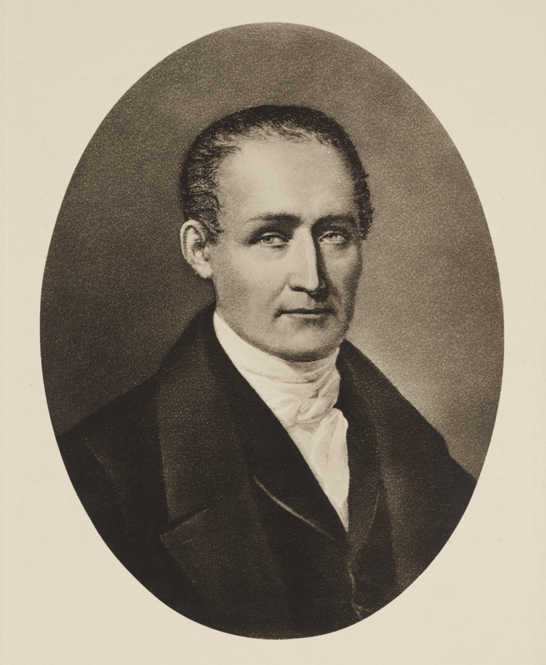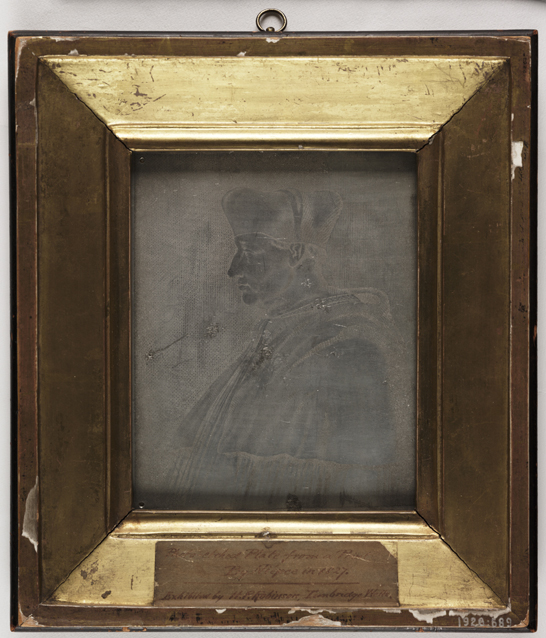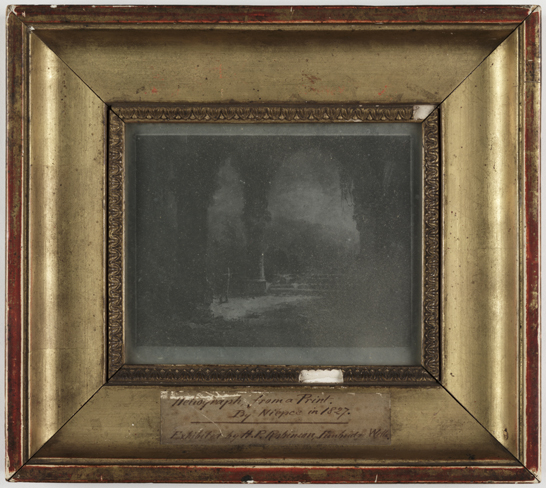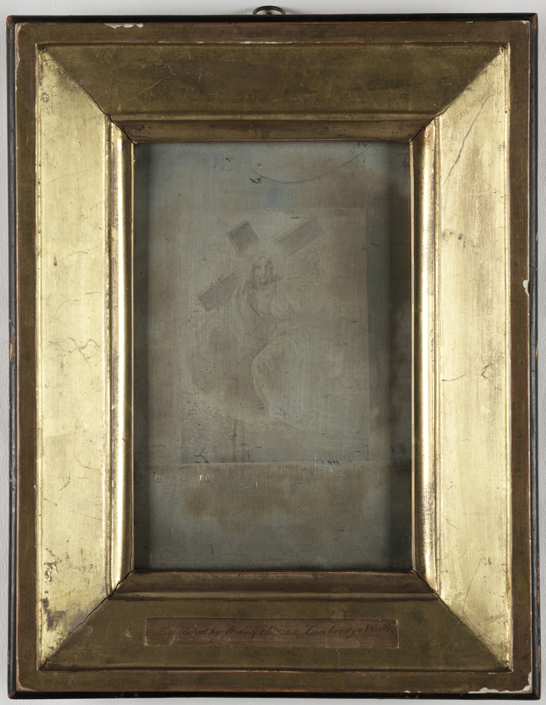Joseph Nicéphore Niépce was one of the most important figures in the invention of photography. Born in France in 1765, Niépce was an amateur scientist, inventor and artist.
In 1807, together with his brother, Claude, he invented the world’s first internal combustion engine, which they called the pyreolophore. However, it is for his experiments with photography that he is now best known.

In around 1816 Niépce became interested in the new technique of lithography and began to explore ways of using light sensitive materials to produce images directly on to the printing plate or stone.
He dissolved bitumen of Judea (a kind of asphalt) in a solvent and coated a pewter plate with the resulting solution. When exposed to light in a camera obscura, the bitumen became hard and insoluble. After exposure the plate was washed in lavender oil and turpentine, which removed the soft unexposed bitumen, leaving a permanent image created by light.

Niépce called his process heliography, from the Greek helios meaning ‘drawing with the sun’. In 1826, using this process, Niépce took the earliest surviving ‘photograph’—a view from a window of his house in Chalons-sur-Saône which required an exposure of about 8 hours!
This image is now preserved as part of the Gernsheim Collection at the University of Texas.
In 1827 Niépce visited England, primarily to see his brother Claude. Claude was living in London at the same time and was causing some concern with his increasingly irrational letters home—he claimed to have invented a perpetual motion machine that would make them all rich.

Niépce also used the trip as an opportunity to try to generate interest in heliography, bringing along six of his plates which he hoped to show to King George IV and the Royal Society. These presentations never took place and Niépce returned home, leaving the plates with a friend, Franz Bauer, and Austrian-born botanical illustrator who was a Fellow of the Royal Society.

In 1829 Niépce went into partnership with another Frenchman, Louis Daguerre, to continue experimenting with heliography. He died of a heart attack in 1833, age 69. His pioneering work in photography was largely overshadowed in 1839 by the announcement of his partner’s daguerreotype process, for the discovery of which Niépce received no posthumous credit.
Only 16 heliographic plates by Niépce are known to be still in existence—three of these are now part of the Royal Photographic Society Collection. In 1884 the eminent photographer Henry Peach Robinson bought three of the plates which had formerly belonged to Franz Bauer at auction, and in 1924 his son, Ralph Robinson—also a well-known photographer—presented them to the Royal Photographic Society.
In October 2010 we revealed the findings of our investigation with the Getty Conservation Institute that re-wrote photographic history and revealed an unknown photographic process used by Joseph Nicéphore Niépce in 1827.
This was so informative this is a great site I love it it helped me understand the photographic world of photography.
metoo!